Mini retirement, traveling the Southwest US
Kurt McIntire
03.31.2020
At the beginning of March 2020, my wife and I quit our tech jobs and left San Francisco for a month-long roadtrip across the Southwest U.S. We started planning this trip 6 months earlier, so we were excited to hit the road on March 2nd. At the time of departure, COVID-19 was still relatively new in the U.S, with only 53 cases nationwide. We were unsure about how and if the virus would affect our trip, so we hit the road and agreed to adjust our plans if necessary.
Our first stop was Paso Robles, CA, where we spent the night in an RV on an alpaca farm. As we pulled up to the farm, two massive, white Great Pyrenees. They barked and barked as we turned into our parking spot and turned off the vehicle. But the second we opened the door, they turned into tail-wagging pet-wanting cuddlers. I didn't know much about the Great Pyrenees breed before meeting these two. I learned that they make for great farm & ranch dogs, as they are fierce protectors.

Alpacas can use a back leg to scratch their body without having to sit on the ground. They don't seem very smart, though.

Guardian Pyrenees
The alpacas were hilarious looking, and the views of the ranch were beautiful at sunset. A coyote must have strayed on the farm late at night, because both Great Pyrenees barked, nonstop, for nearly 30 minutes around 4:00am.

Loving the pets
Next, we drove to Santa Barbara, CA and stayed at a tiny home within the Funk Zone neighborhood. The tiny home was tiny. Though modern and hip, it was likely under 150 square feet (I'm guessing 14x10).

Truly tiny
While in Santa Barbara, we boarded a ferry to the Channel Islands. To visit Santa Cruz Island, an island within the Channel Islands, our trip took about 1.5 hours. On our way to Santa Cruz, we saw several whales.

Disembarking to Santa Cruz Island. It's odd looking back at this picture, with so many people in close contact. But these were the early days of COVID-19.
Once at the island, we hiked for over two hours, taking in the views of the Pacific Ocean and surrounding landscape. Apparently, this island is home to small foxes weighing between 2-6 pounds and standing only 6-inches at the shoulder. Unfortunately, we didn't see any, but I spent much of the hike playing with my camera gimbal.

This island is HUGE
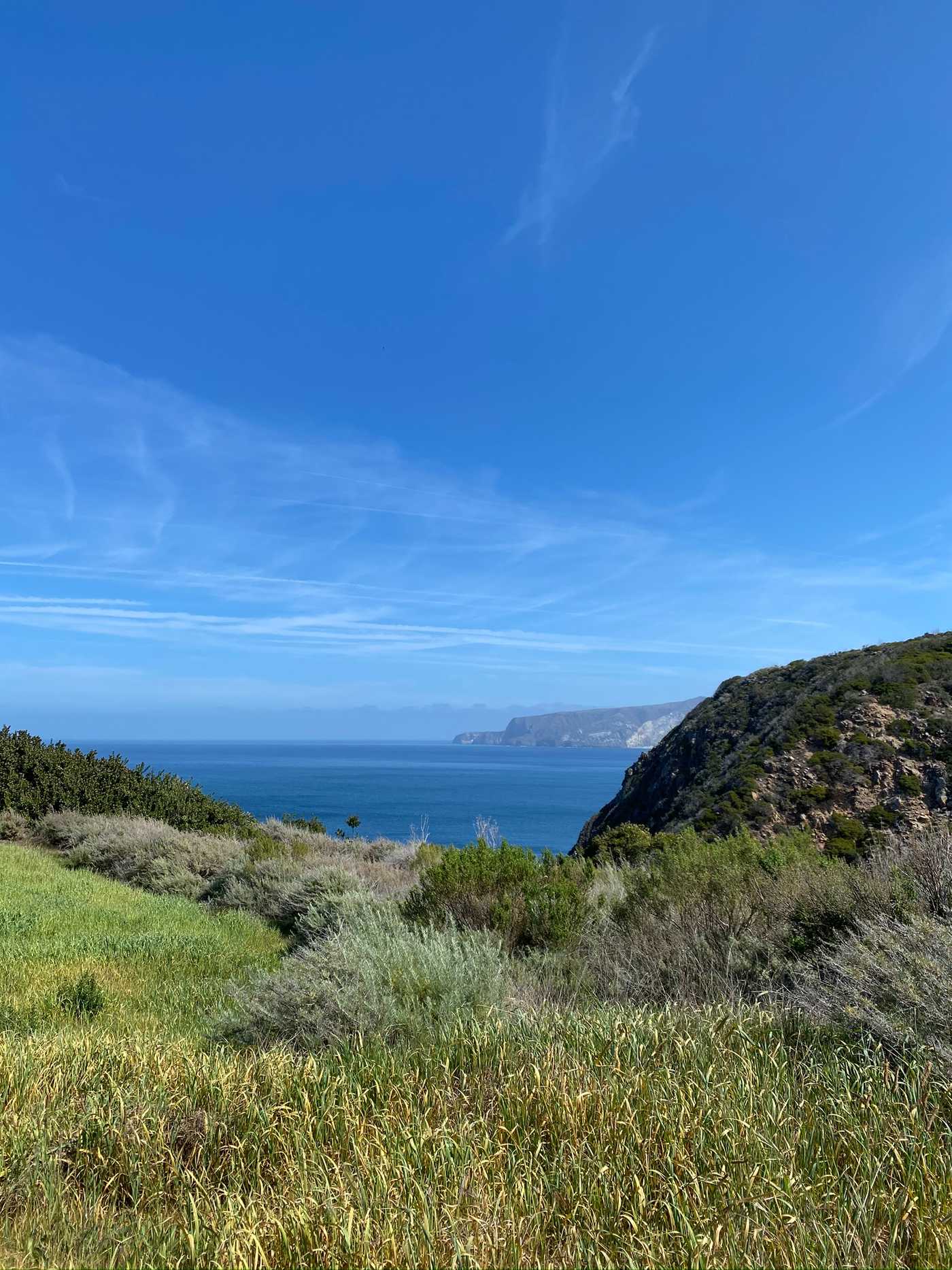
Where are the foxes?

Lunch on the island

Getting a sick shot
On the ferry back from the island, the sun was setting and we were exhausted from a long day. Maureen and I were half asleep, looking forward to a quick dinner and quiet evening. Partway through the journey, the captain got on the loudspeaker and said, "Alright, folks, we have a large pod of dolphins just up ahead. Let's go take a look."
When the captain said "a large pod of dolphins", I perked up, expecting 10-20 dolphins. Instead, we saw dolphin fins slicing through the water, as far as the eye could see. I've never seen anything like it. I couldn't count how many we saw, so I was floored when the captain returned to the loudspeaker saying, "If I had to guess, we're looking at thousands of dolphins in this mega-pod." Dolphins chased the boat's wake. Dolphins leapt into the air, writhing and rolling as they dove back into the water. It was stunning. Maureen and I mostly sat in silence with big smiles on our faces. This encounter lasted a solid 15 minutes before the captain returned us to our original course. Apparently the ferry drives by this mega-pod almost every evening during the spring time of year.

Overlooking the sunset, just before dolphin bomb
Once in San Diego, we stayed in a more traditional Airbnb condo a short walk from the Gaslamp Quarter. We particularly enjoyed the Little Italy neighborhood, with its cute restaurants, clean streets, and young residents. At this point in our trip, some schools throughout California were closing due to COVID, but all restaurants were still open.
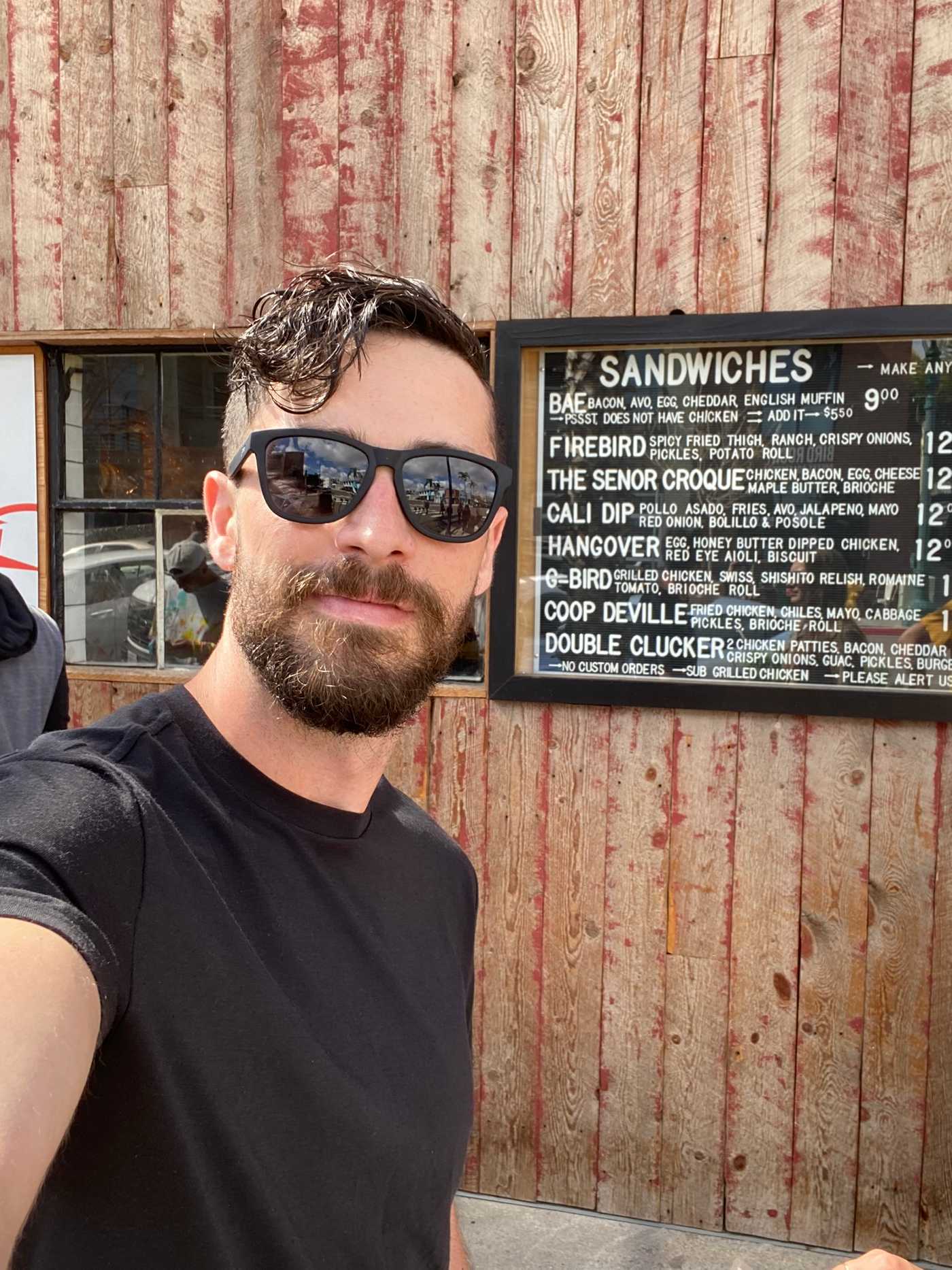
I liked Little Italy
But the highlight of San Diego was La Jolla beach, where we spent the whole day relaxing in the sun. We walked through the neighborhoods, gawking at the beautiful homes and imagining what it'd be like to live there.

Beachin'

Perfect weather

Dreaming of this neighborhood

House envy
Next, we drove to Joshua Tree, CA, where we stayed at a remote home tucked deep into the desert. The house was small, cute, had an outdoor toilet, and a large sand yard. To get to the house, we had to drive several miles on poorly marked sand roads. Sleeping in the home was a little nerve-wracking, as visits to the bathroom in the middle of the night required a flashlight.

This was our Airbnb

Nice on the inside, bathroom on the outside
During the day, we traveled into Joshua Tree National Park and went for a run-hike on the North View and Big Pine trails. Joshua Tree is other-worldly. Some say it's like being on the Moon or Mars. I think of it as the landscape from the Flintstones. The landscape is dotted with giant rocks, odd-shaped Yucca brevifolia, and gray sun-scorched dirt.

Excited to move the legs

Meet Fred Flintstone
From Joshua Tree, we drove 45 minutes south to Palm Springs. Here, we stayed at the Colony Palms, a favorite hotel destination of ours. We spent most of our time by the pool, enjoying the beautiful weather and sites of Mount St. Jacinto.
One afternoon we rented bikes and drove them around Palm Spring's Las Palmas neighborhood. Classic, mid-century modern homes line the streets, with vibrant colors, sharp lines, and immaculate landscaping.

Palm Springs has some great houses

Living that bike life

"We'll need jobs to afford a place like this"
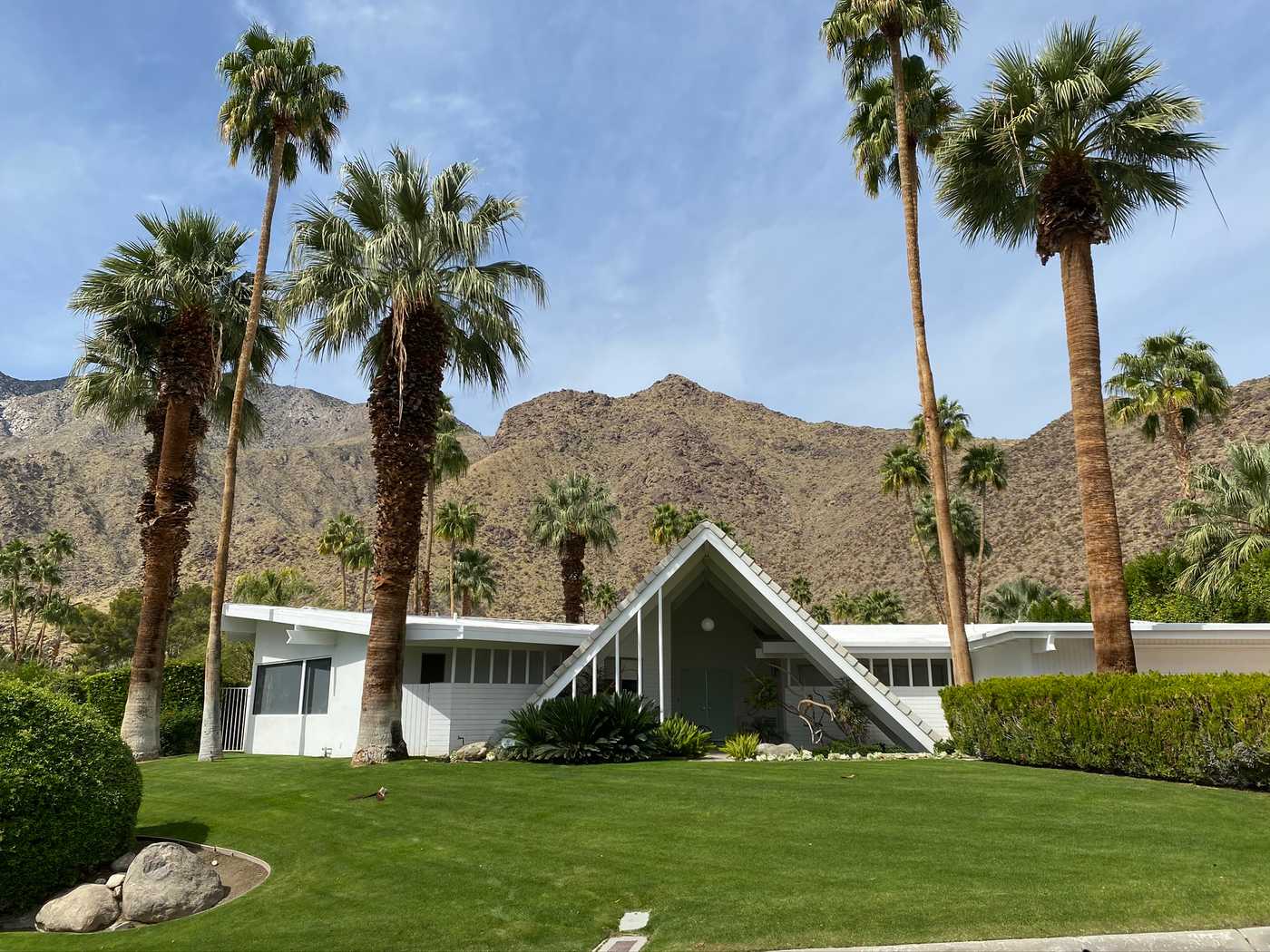
"Let's pull up Zillow and see how much this costs"

"Whoa, must be Burt Reynolds or something"
Next, we drove nearly eight hours to Tucson, Arizona. Honestly, I didn't know that Tucson was spelled with the "c" in front of the "s". Tucson has an up-and-coming vibe to it. Homes are quaint and brightly colored. Good coffee is easy to find. The tacos are great. We stayed in a Sonoran-style duplex near the Barrio Historico neighborhood.

Tucson architecture

Sonoran-style houses

Tucson food
Tucson is nestled within Saguaro National Park. We went on several hikes and runs through Saguaro East and Saguaro West. Saguaro West was more mountainous and Saguaro East was flat. But both had unending fields of Giant Saguaro cacti.

Saguaro West

Cacti is plural for cactus
From Tucson, we drove to Arcosanti, near Prescott, Arizona. Arcosanti is an experimental city, made of concrete and steel, set in the Northern Arizona wilderness. It looks like someone stacked concrete boxes on top of each other and spread them at the edge of a cliff. The creator of Arcosanti, architect Paolo Soleri, intended for the city to be a futuristic example of hyper-dense, ecologically friendly urban living.
We stayed in one of Arcosanti's dormitory rooms, which reminded me of being in college. The room was street level, the floor made of concrete, and had a small bed. That evening we walked around the empty city, exploring its odd maze of concrete structures. I'm not sure how successful Paolo Soleri was was his vision, but Arcosanti is special.

Arcosanti is a city / commune made up of giant concrete structures in Arizona's high desert

Arcosanti has public areas like bandshells

I like the ambition of Arcosanti's creator
The next day, we drove to Jerome, Arizona, a small town tucked high up in the mountains between Prescott and Sedona. This town has a population of 450, and is the home of Tool's lead singer, Maynard James Keenan. We visited Maynard's local winery, which was quite good, and a nearby ghost town. The ghost town wasn't spooky, but we enjoyed seeing the farm animals that freely roamed the site.

Jerome, nestled into the mountains

Ghost town? More like Old Cars town

Ok, this building was cool

But have you?
After Jerome, we drove to the beatiful Sedona. Sedona is tucked into a sprawling range of red mesas, which turn purple in the evenings.

Sedona's mesas
Later that day, we settled in Flagstaff, Arizona. Flagstaff is nearly at the northern border of Arizona and southern Utah, putting it in proximity to the Grand Canyon, Monument Valley, Lake Powell, and Zion National Park.
Up until this point in our trip, COVID-19 didn't quite feel real. From San Diego to Tucson to Jerome, bars and restaurants were still open. Lockdowns weren't happening and businesses were open. When we reached Flagstaff, the mood started to change. U.S. COVID cases reached the thousands. San Francisco went into lockdown mode, closing all non-essential businesses. Flagstaff closed all its bars and restaurants too, but drive-throughs and grocery stores remained open. COVID wasn't under control, so we needed to take precautionary actions to reduce our exposure to others.
We extended our stay in Flagstaff to nearly a week -- originally we planned on staying only a few days. This allowed us to continue staying in the same Airbnb, limiting the amount of new environments that we encountered per day.
In Flagstaff, we did our best to avoid others. Fortunately, since it is a relatively small town surrounded wilderness, it was easy to go a whole day without getting within 50m of another person. During this week, we hiked through cactus covered Sedona desert, descended into the red trails of the Grand Canyon, and ran through pine-tree forests surrounding Flagstaff. With the varied terrain and high elevation (8,000-ft), Flagstaff is the ideal training for elite athletes like ultra-runners, track athletes, and triathletes. Both of us are competitive runners, so we were in paradise.

Look at the size of this lad

This warning sign, at the entrance to our Grand Canyon hike, cracked me up
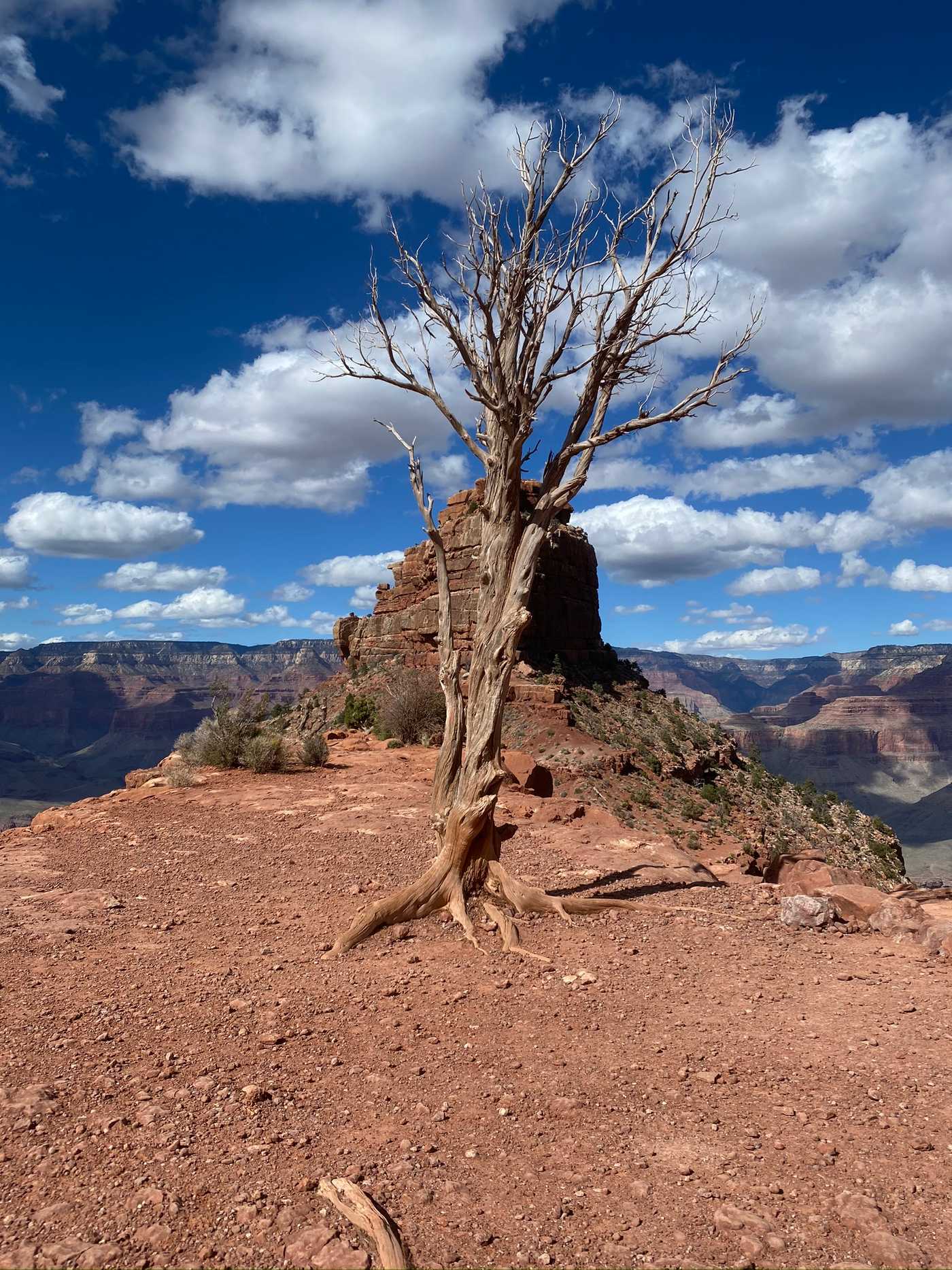
Epic tree

We spent much of the trip hoping to see a mountain goat or bighorn sheep

Hiking thousands of feet into the canyon

Gnarly trails

Dang

Hiking & running everyday
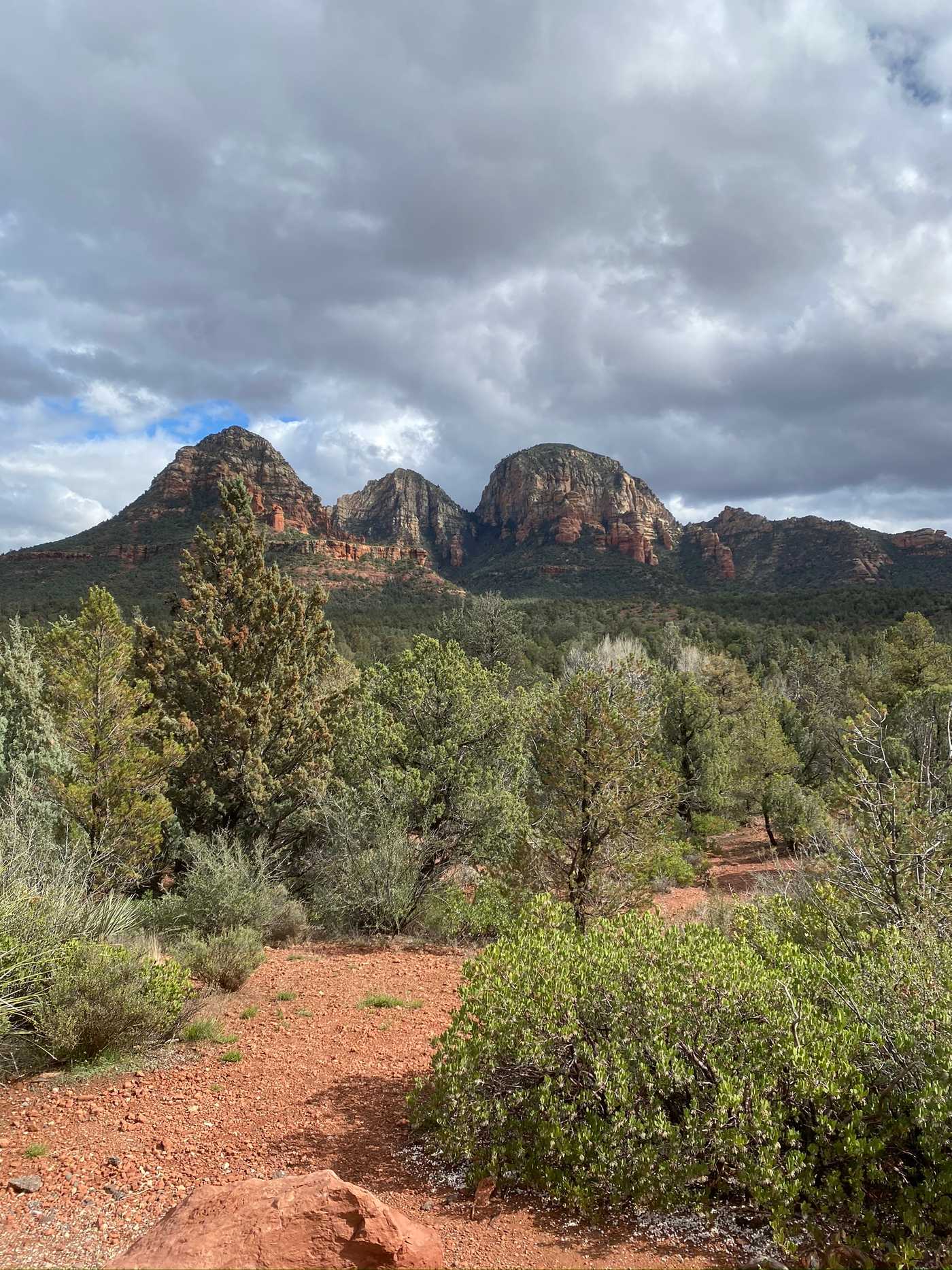
Northern Arizona

Outside, happy
From Flagstaff, we drove to Orderville, Utah. This town, with only 500 people, is located nicely between Bryce Canyon National Park and Zion National Park. We stayed in a tiny home again, but this one was larger than our tiny tiny home in Santa Barbara. This Utah tiny home was probably triple the size, and was set at the bottom of a row of cliffs on the northern side of town.

Not-so-tiny home
First, we visited Bryce Canyon, where it recently snowed. We hiked as far as we could into the park's row of spires, but many of the trails were closed for Utah's long mountain winter. I'd like to return there during the summer.

Bryce Canyon, fresh snow

Lots of closed trails, but beautiful sites

Natural arches

Amazing overlooks
Zion National Park was a trip highlight. Zion feels huge. The valley that stretches the park is sharply set inside of massive granite peaks on each side. We hiked and ran a few trails in the park, doing our best to avoid popular stretches still filled with tourists.
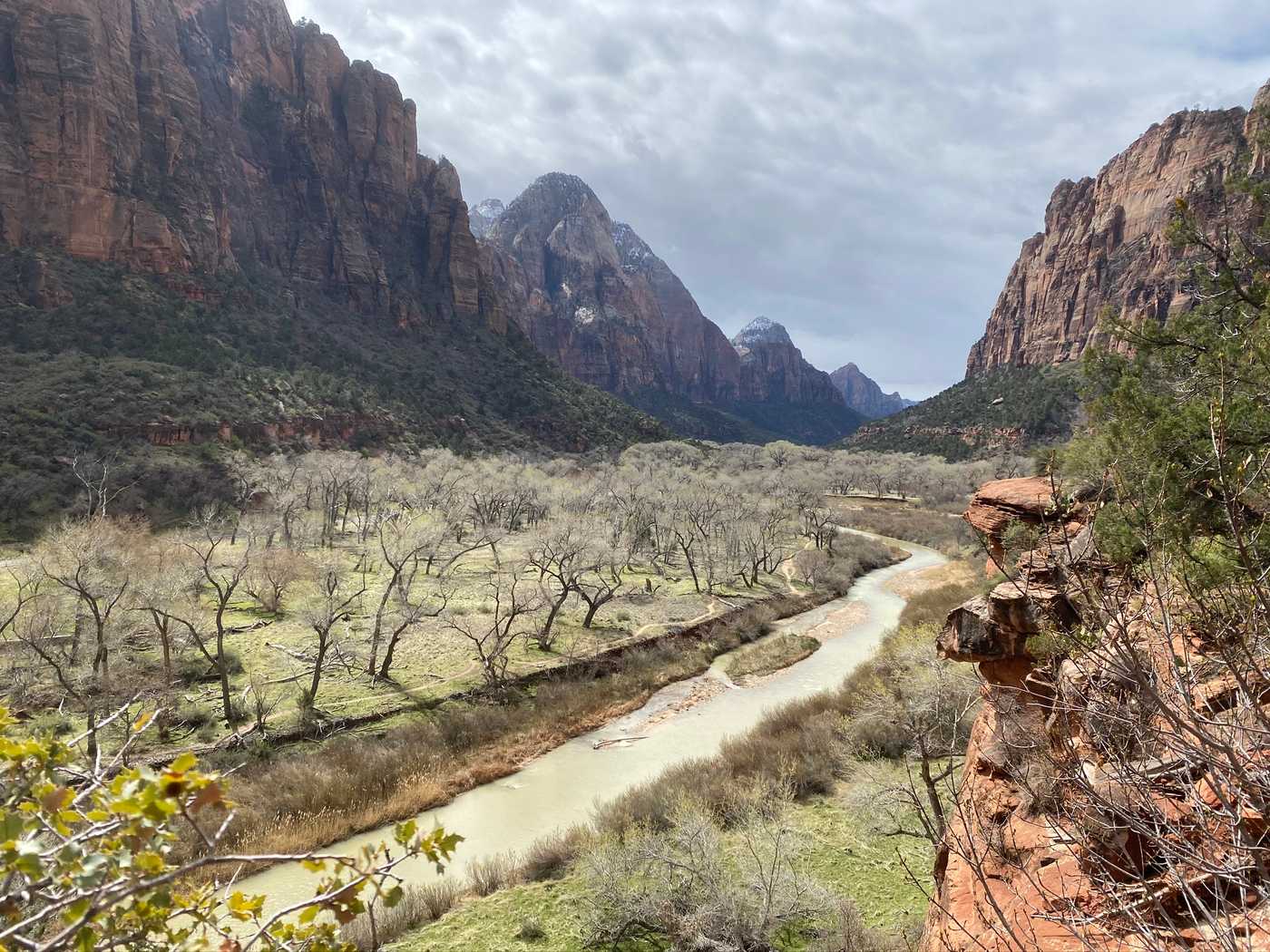
Wow, Zion

Zion big

Enjoying nature
For the final week of our trip, we stayed in Page, Arizona. Like Flagstaff, we hadn't planned on staying in Page for more than a few days. Yet, due to virus concerns, we stayed in Page for nearly a week. While there, we visited Monument Valley, Horseshoe Bend, and various trails throughout the Grand Staircase-Escalante National Monument.

Horseshoe Bend at sunset

Standing at the edge

Monument Valley

Forrest Gump ran here
We cut our trip short a few days, as COVID-19 continued to spread. We originally planned on visiting Death Valley and Yosemite, but were anxious to get back to San Francisco. Though we were fairly safe & isolated in northern Arizona, we were unsettled to be away from home. We drove 14 hours straight from Page to San Francisco.
Despite the COVID-19 impacts to our trip, I loved our time on the road. Maureen and I were outside everyday, enjoying nature, and seeing new sites. We whipped-up homemade dinners most nights, and spent long hours quietly reading or writing. We're privileged to get a chance to go on such a trip. If you find yourself in the fortunate position to take time off work and hit the road for a mini-retirement, I can't recommend it enough.